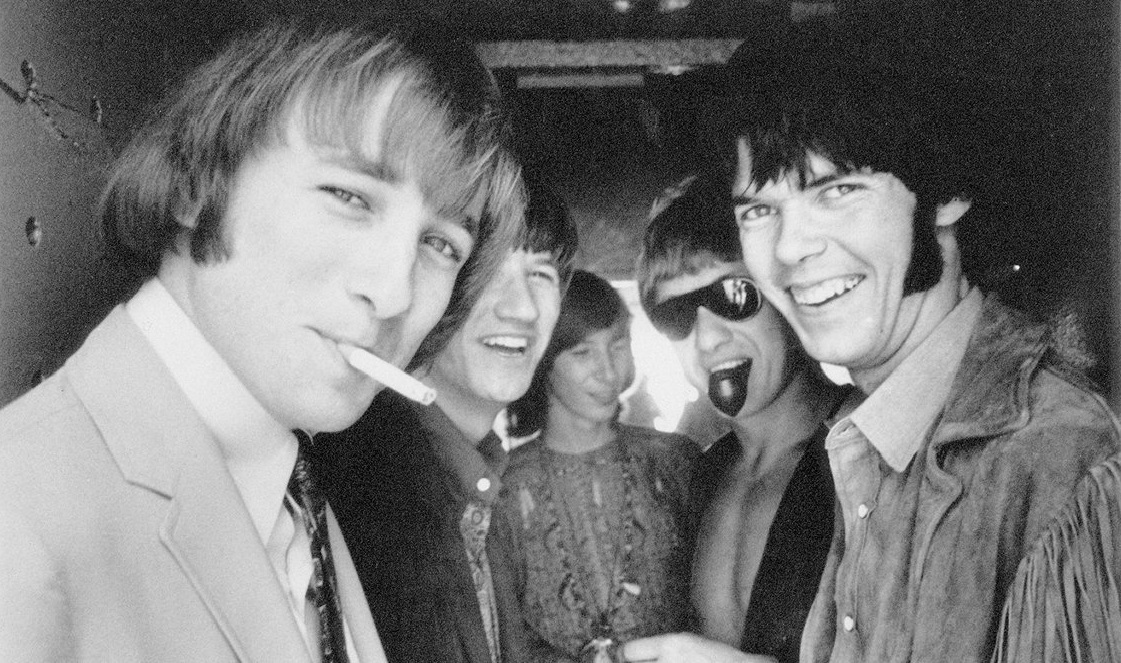Neil Young - Harvest Moon
Listen to full episode:
On this episode, we discuss Neil Young’s 1992 album, Harvest Moon.
After a stint at Geffen records that resulted in a lawsuit for not sounding characteristic enough and churning out two albums for Reprise that basically planted the seeds for grunge, Neil Young decided it was time to give his ears a rest. Harvest Moon finds Young in familiar and popular territory. The album is very reminiscent of Young's 1972 album Harvest, includes many of the players and singers from that album, and even touches on some of the same themes.
THINGS WE DISCUSSED ON THIS EPISODE
Neil Young (pictured standing and holding a guitar) started his musical career in 1963 playing around Winnipeg, Manitoba with the Squires. Their first single was a double instrumental, “Aurora" and "The Sultan,” which were recorded during a live radio broadcast on local radio station CKRC. You can listen to Young’s vocals on I’m a Man and I Can’t Cry” below.
The Squires didn’t last and Young ended up moving to Toronto and performed at clubs and coffeehouses in the area. He gets talked into joining a band called the Mynah Birds by their bassist Bruce Palmer. Their lead singer is none other than a fledging Rick James. The band recorded a single called “It’s My Time” for release on Motown’s V.I.P. imprint. Unfortunately, the band was dropped from Mowtown and the single was not released at the time, and because it was discovered that singer Rick James was A.W.O.L from the US Navy, and was subsequently remanded into the custody of the Navy. You can listen to “It’s My Time” below.
With the Mynah Birds no longer a going concern, Neil Young and Bruce Palmer headed to Los Angeles in a hearse they had purchased, where the two of them end up forming Buffalo Springfield with Stephen Still ( who Young had met when he was playing the Toronto folk circuit), Richie Furray, and Dewey Martin, who had been the drummer with the Standells
Buffalo Springfield (pictured from left to right: Stephen Stills, Richie Furay, Bruce Palmer, Dewey Martin, and Neil Young.)
After leaving Buffalo Springfield, Young ends up signing with Reprise Records in 1969 and releases his self-titled debut and Everybody Knows This Is Nowhere (his first with Crazy Horse backing him up).
He also reconnected with Stephen Stills at this time and joins his new supergroup Crosby, Stills, Nash (with David Crosby and Graham Nash), which was subsequently renamed Crosby, Stills, Nash & Young. The group plays at Woodstock in 1969 and release Déjà Vu in 1970 to massive critical and commercial success.
Crosby, Stills, Nash, and Young live circa 1974.
Harvest Moon is a sequel of sorts to Young’s 1972 LP Harvest recorded for Reprise Records. Harvest remains Young’s only number 1 album. Listen to him perform the title track “Harvest” at the Royal Festival Hall in London the day after he wrote it.
Young recorded his 1988 LP This Note's For You with a 10-piece R&B horn band.
The title track was about the commercialism of music and the video (see below) for the track was surrounded by controversy. Micheal Jackson’s attorney threatened to sue MTV if the broadcasted the video because it featured an unflattering parody from a Micheal Jackson commercial., and MTV initially refused to play it. However, the Canadian music channel MuchMusic did run the video. It was such a hit on that MTV reconsidered their decision and put the video into heavy rotation. Ironically, it ended up winning the 1989 MTV Video Music Award for Best Video of the Year.
The start of the new decade saw Young release Ragged Glory (1990) which he recorded with Crazy Horse. The LP is routinely referred to as minimalist Garage rock. The Raged Glory tour was purposefully designed to be” LOUD” (for example, see Neil Young and Crazy Horse perform “Love and Only Love” from Ragged Glory below ) and it eventually took its toll on Young. After six months of playing music that he described as: “loud in the way a crashing plane is loud,” he had damaged his ears. As a result, the next album, Harvest Moon, would be a much quieter affair.
Watch Neil Young perform “Unknown Legend” on The Tonight Show in 1993.




